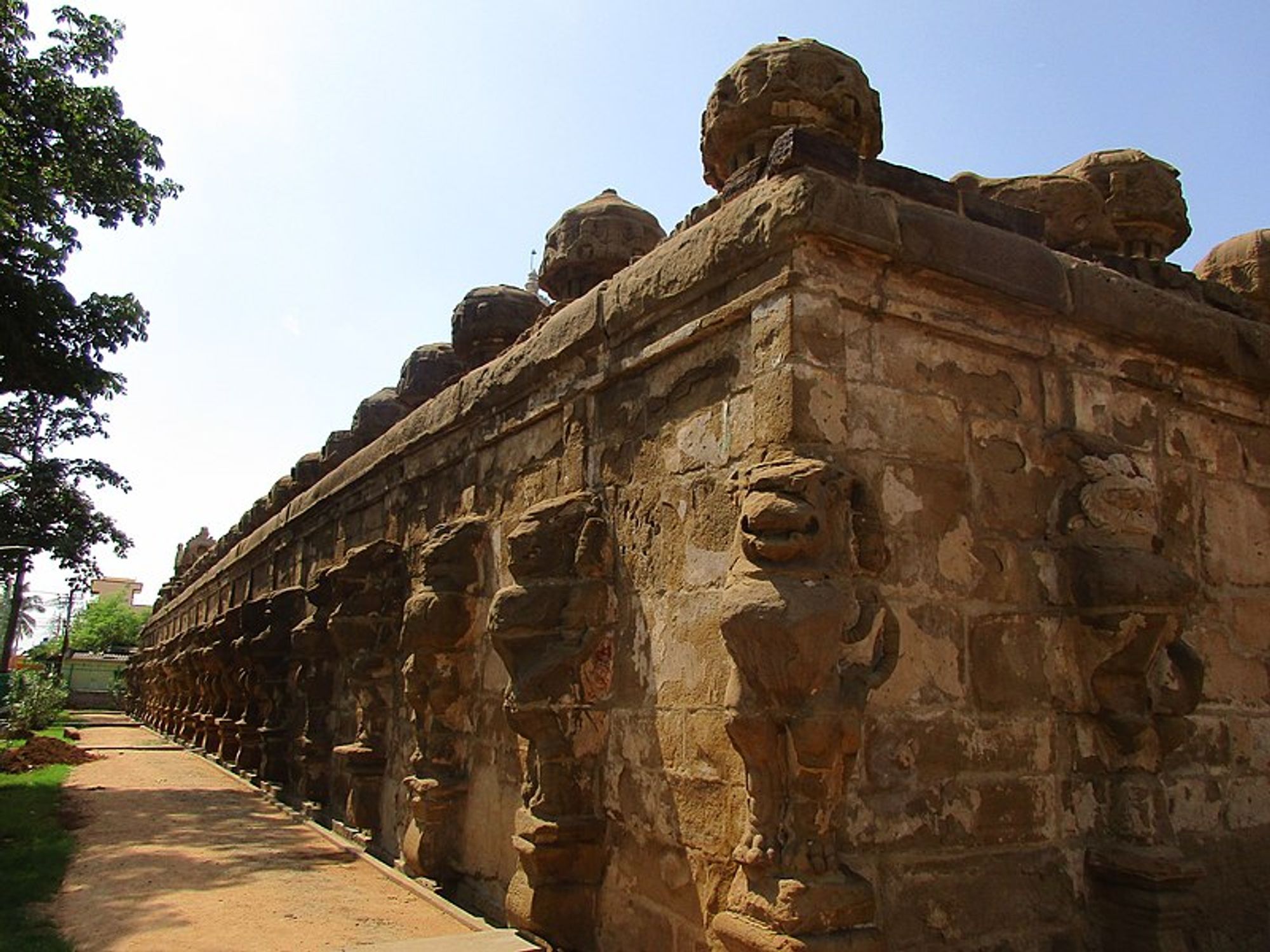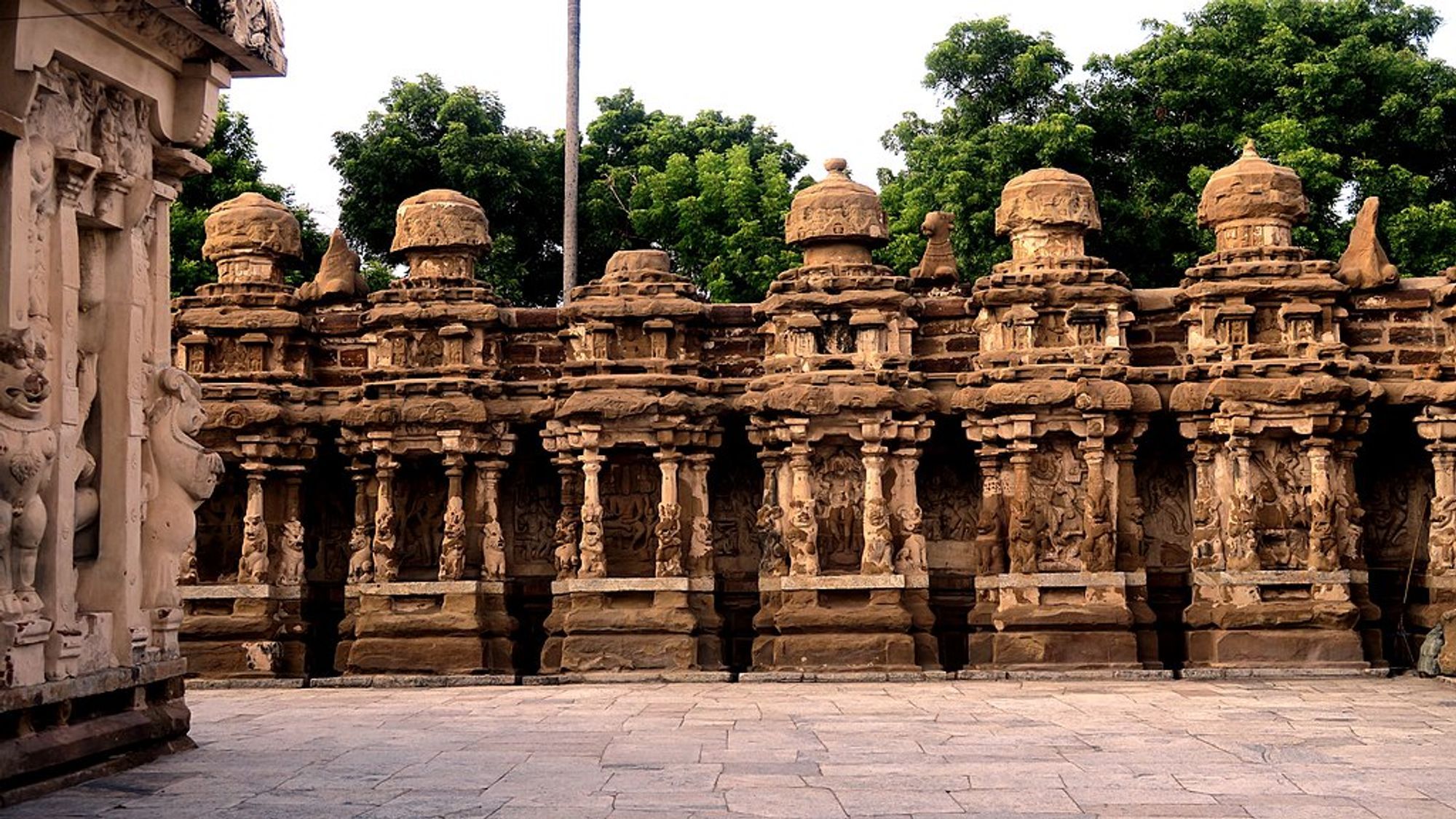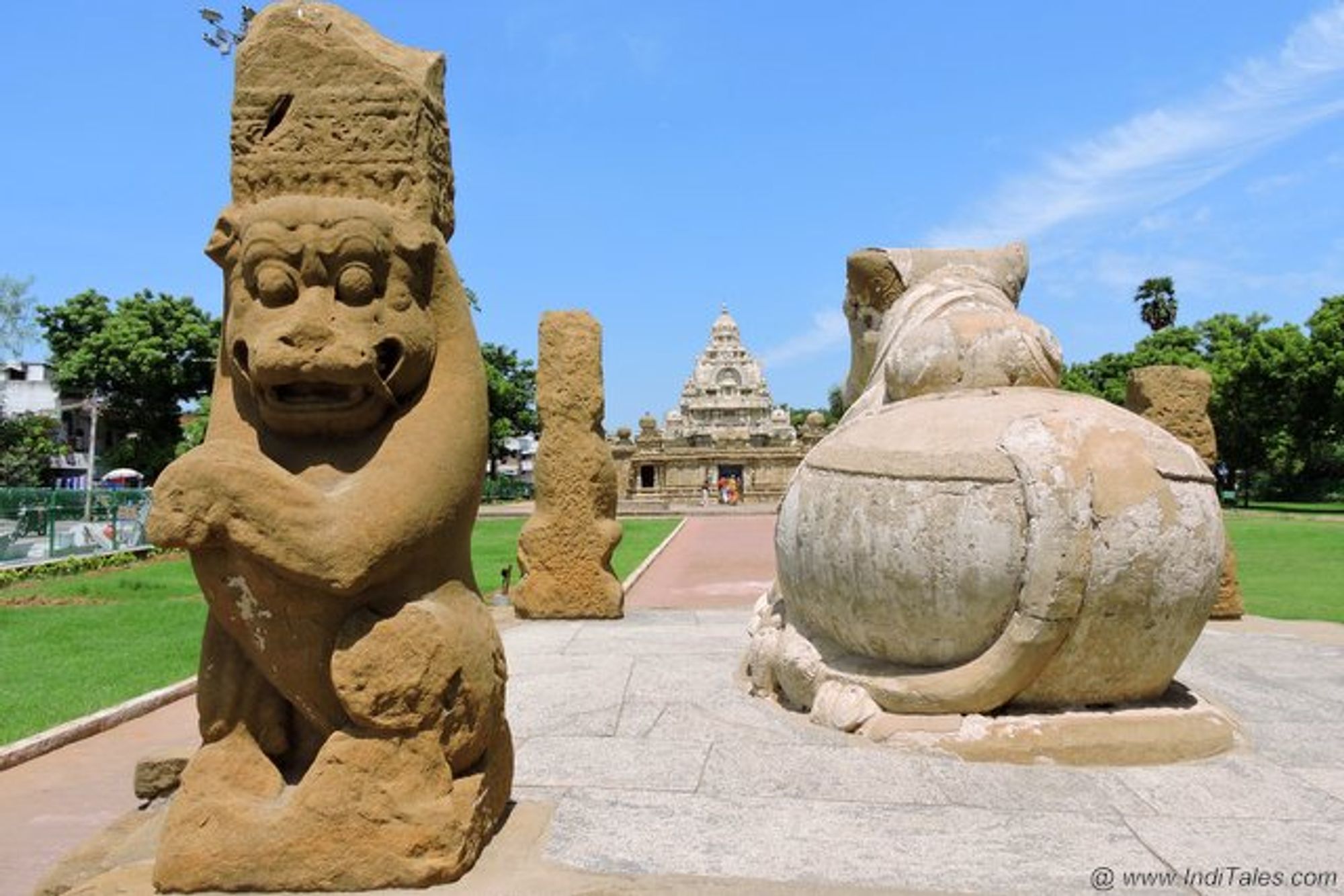Kailasnathar Temple: A Confluence of Art and Divinity
The Kailasanathar Temple in Kanchipuram, Tamil Nadu, India, stands as a remarkable example of Dravidian architecture and serves as a vibrant representation of the area's profound cultural heritage. Believed to have been constructed in the early 8th century AD under the rule of King Narasimhavarman II from the Pallava dynasty, this temple dedicated to Lord Shiva holds significant renown for housing some of the earliest and finest instances of Hindu mural art in Tamil Nadu.

The Kailashnathar temple I Source: Wikipedia
The main shrine within the rectangular layout houses a 16-sided Shivalinga crafted from black granite, enshrined in the sanctum sanctorum. A sculpted Nandi stands at a distance, guarding the deity. An encompassing corridor runs along the garbhagriha's wall. Devotees ascend seven steps to access the passage, which they must then traverse through a remarkably narrow pathway. Legend likens this journey to traversing life and attaining moksha, liberation from the cycle of life and death. Numerous sculptures of deities adorn the exterior walls of the main shrine, including depictions of Shiva as Umamaheshavara, Lingodbhava, and others.
The temple stands out for its unique Dravidian architectural features, including intricately adorned gopurams and mandapas. It also boasts exquisite bas-reliefs and sculptures portraying scenes from Hindu mythology. While retaining the original Pallava architectural style, the temple incorporates elements of subsequent Chola and Vijayanagara styles. The foundation is made of granite, while sandstone is used for carvings and the superstructure.
Structured in a square layout, the temple complex features an entrance gopuram, a garbagriha, an antarala, a pyramidal shikhara, a mandapa, and a high compound wall. The mandapa, previously separate, was connected to the main shrine by adding an ardhamandapa. Mythological lion mounts are repeatedly depicted in the mandapa's pillars.
Additionally, the temple comprises a mukha-mandapa, a maha-mandapa, and a primary garbhagriha surmounted by a vimana. The vimana is a standout feature, comprising four levels, each adorned with carvings portraying scenes from Hindu mythology. The entrance to the main sanctum is flanked by nine shrines, seven external and two internal, each dedicated to various forms of Lord Shiva. Surrounding the prakara's inner walls are multiple cells.
The Kailasanathar Temple is celebrated for its finely crafted and painted Hindu artwork, showcasing the Tamil style prevalent during the late 7th and early 8th centuries. While Shaivism is prominent, motifs from Vaishnavism, Shaktism, and Vedic deities also adorn the murals. The most exceptional mural paintings within the temple are found on the inside walls of the courtyard cells. Some scholars note stylistic similarities between these murals, those at Ajanta Caves, and the ancient artwork at Kanchipuram's Vaikunthaperumal Temple, dating back to the eighth century.
Over the ages, the Kailasanathar Temple has retained its cherished status as a cultural gem for the people of Kanchipuram. It comes alive during the festival of Mahashivaratri. Although the temple has undergone multiple renovations and restorations, its original magnificence has endured. Today, the Kailasanathar Temple continues to captivate countless visitors worldwide, who come to appreciate its architectural grandeur and cultural heritage. It stands as a tribute to the artistic and architectural brilliance of the Pallava dynasty, embodying the enduring legacy of Indian culture.
Situated on the banks of the Vegavathi River at the western fringes of Kanchipuram, the Kailasanathar Temple (Kanchipuram) stands as the town's most ancient temple. Oriented towards the east, it holds its place in one of the three "Kanchis" - the Shiva Kanchi, Vishnu Kanchi and Jain Kanchi. Among the oldest structures in Kanchipuram, this sandstone edifice showcases Dravidian-style architecture and encompasses fifty-eight shrines portraying diverse forms of Lord Shiva, in addition to the primary shrine. These shrines are integrated into niches along the inner face of the high compound wall surrounding the circumambulatory passage.
Credited to the Pallava dynasty, who established their realm with Kanchipuram as its capital, the temple's construction is attributed to them. The Pallavas erected several grand temples in the city of Kanchipuram, which holds status as one of Hinduism's seven holiest cities. The Kailashanathar Temple was built between 650 AD and 705 CE. Subsequent years saw expansions and repairs. Commissioned by Narasimhavarman II (Rajasimha), it marked the debut of structural temple architecture in South India. The gopuram and the temple's front façade were later added by his son Mahendravarman III.
According to local lore, the temple served as a haven for the kingdom's monarchs during times of conflict. The monarchs constructed a concealed tunnel, believed to be an escape route, which remains visible today. Legend has it that King Raja Raja Chola I (985–1014 CE) visited the temple and drew inspiration from it to construct the famed Brihadeeswara Temple in Thanjavur.
A Nandi Mandapa stands a short distance away from the temple, featuring a medium-sized Nandi facing the sanctum. This open-air mandapa is surrounded by lion-faced pillars, a recurring motif in the temple complex.
The prakara's inner walls host an array of images, including Durga, Kartikeya, Bhavati, Tripurantaka, Garudarudha-Vishnu, Narasimha, Trivikrama, Shiva Tandava, Lingodbhava, Ravana, and more. The depiction of Ardhanariswara seated on a bull stands out prominently.
Within the temple complex, numerous shrines are present. The entry wall features eight small shrines, while the compound wall niches surrounding the main shrine house fifty-eight miniature shrines portraying Somaskanada reliefs of Shiva and Parvathi in various dance forms.

The temple’s layout I Source: Wikimedia Commons

Inner court or the circumambulatory passage with 58 sub-shrines I Source: Wikimedia Commons

The outer wall of the Temple I Source: Wikimedia Commons

Other shrines within the temple complex I Source: Wikimedia Commons

The open-air Nandi Mandapa I Source: inditales.com


